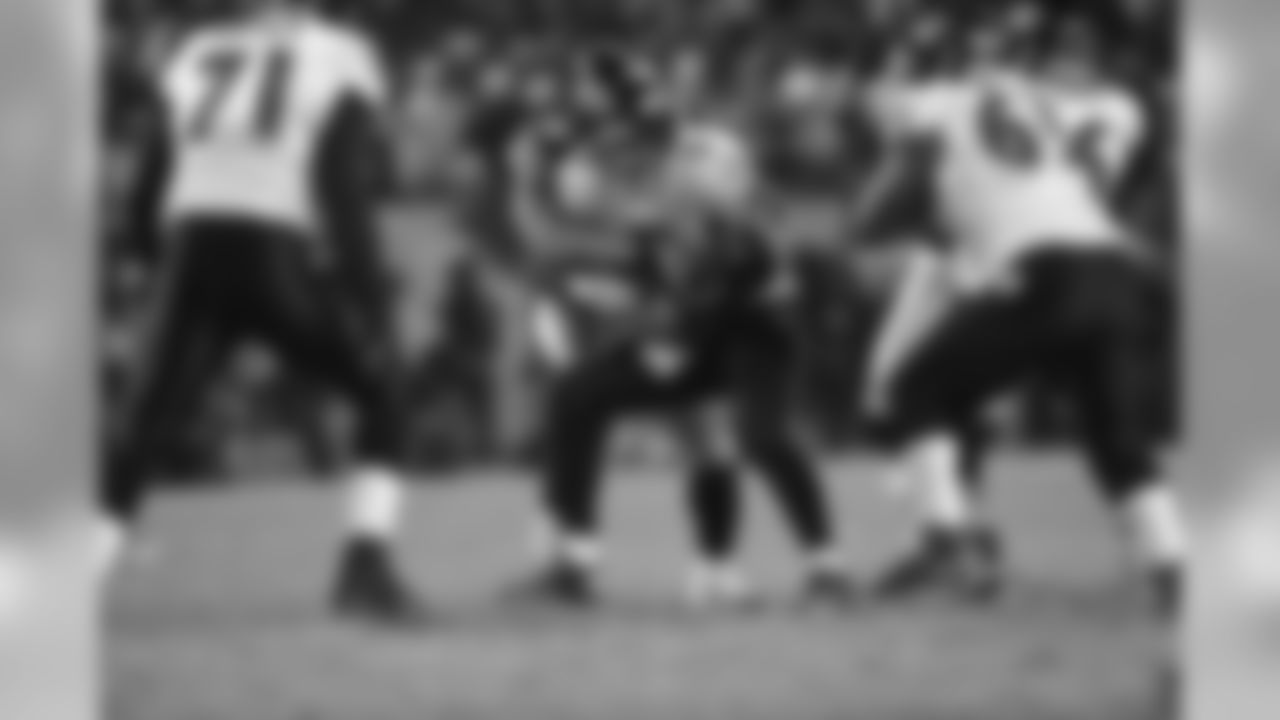Take a look at some images of Steelers playoff and Superbowl victories from "The Good Years" of 2004-10.





























































































"We were good enough for second, but second isn't good enough."
Kevin Colbert said that some weeks after Super Bowl XLV, which had ended with the Steelers losing to the Green Bay Packers, 31-25, an outcome that had denied the franchise a third championship in a six-season span and a seventh championship overall.
Those were glorious days to be a Steelers fan. During the seven seasons from 2004-10, the Steelers posted a 15-1 regular season, a couple of 12-4s, an 11-5, and a 10-6. They won the AFC North Division four times. They were 10-3 in the playoffs. Seven of the 10 possible AFC playoff games were at Heinz Field, including three AFC Championship games. Twice the fans at Heinz Field got to stay in their own seats and see the Steelers presented with the Lamar Hunt Trophy for winning the AFC Championship. And twice there were parades through Downtown when another Lombardi Trophy was brought back to live in Pittsburgh.
Glorious days, indeed.
Not so glorious of late, though. The Steelers have been to the playoffs once in the three full seasons since their loss in Super Bowl XLV, and they were defeated by Tim Tebow's Denver Broncos in that game. By definition, they have been mediocre since – 8-8 in the two seasons spanning 2012-13 and 3-3 to this point in 2014.
The NFL, with its rules regarding things such as draft order and waiver claims and scheduling, with its system of free agency tied to a salary cap, is set up to promote parity, which can be viewed either as an attempt to uplift the bad teams or an attempt to make it difficult for the successful ones.
DRAFTING LATE; BEING SENTIMENTAL
Along with all of the wins and playoff games and Super Bowls, what 2004-10 meant for the Steelers was drafting 30th, then 32nd, then 15th, then 23rd, then 32nd, then 18th, then 31st. It meant five games against New England and two against Indianapolis as part of the intraconference schedule-making that has one division's better teams playing another division's better teams. And it also meant falling victim to the practice of making personnel decisions with the heart instead of the head.
Even Chuck Noll wasn't immune to this, with the most famous example coming in 1979 when the Steelers cut fifth-round draft pick Dwaine Board in order to keep an-obviously-in-decline Dwight White. Board got claimed by the San Francisco 49ers and went on to become one of the league's best defensive linemen from 1983-86, but White had been the guy who climbed out of a hospital bed to play valiantly in Super Bowl IX.
In this current era, these kinds of mistakes now are made via the checkbook. It's the salary cap issues that are constantly capable of muddying the big picture for teams experiencing a run of success. What happened to the Steelers was that in trying to keep their core together through those seasons between Super Bowls in an effort to win one more, they ended up re-doing too many deals and pushing too much money onto future caps. Then starting with 2011, the Steelers found themselves with a lot of aging veterans – the majority of them on defense – whose production no longer justified the cap numbers they carried.
At the end of the 2011 season – 12-4, Wild Card Round loser in overtime in Denver – 18 players on the Steelers' roster were in their 30s. Today, that number is 12, and among those 12 are the long-snapper, placekicker, backup quarterback, and the coaxed-from-retirement James Harrison. Also during that time, the locker room lost James Farrior, Aaron Smith, Hines Ward, Casey Hampton, Chris Hoke, Larry Foote, and Antwaan Randle El.
Never a big player in free agency anyway, the Steelers were left with the annual draft as the primary method of attempting to replace a hunk of a roster that was 77-35 (.688) in the regular season and 10-3 in the postseason.
And it wasn't always their best work. Mistakes were made, and there wasn't sufficient room under the salary cap each year to cover up some of those mistakes. And then subsequent picks had to be spent on some of the same positions. There were guys who left as unrestricted free agents after their rookie contracts – Mike Wallace and Keenan Lewis and Emmanuel Sanders. If a rookie named Sean Spence doesn't sustain a serious knee injury and instead spends the time growing as the three-down inside linebacker he was indicating he was instead of rehabilitating his injury, is it necessary to use a No. 1 pick on another three-down inside linebacker two years later?
There were errors made in some recent drafts, but a fact of life in the business of player personnel is that if you do it long enough you're going to mess up some. Remember, the same group who were responsible for the Steelers' 1974 draft class – four Hall of Fame players over the first five rounds – the group who also was responsible for L.C. Greenwood in the 10th round in 1969 and Mel Blount in the third in 1970 and Jack Ham, Gerry Mullins, Dwight White, Larry Brown, Ernie Holmes, and Mike Wagner in Rounds 2-11 in 1971, etc., also picked Greg Hawthorne and Zack Valentine in the first two rounds in 1980, and then John Goodman and Bob Kohrs with two second-round picks in 1981, and then Darryl Sims and Mark Behning in the first two rounds in 1985.
These are not meant to be excuses so much as an explanation of how the system, human error, luck, and destiny can combine to turn a perpetually contending team into a mediocre one.
THE STANDARD IS THE STANDARD
The franchise's stance, as articulated by Kevin Colbert in the statement he made after Super Bowl XLV, is that its expectation is to compete for a championship every year and anything less represents failure. The standard is the standard after all. Art Rooney II, Colbert, and Mike Tomlin all have disputed the suggestion that the Steelers are a team in transition when asked during postmortem media sessions following both 8-8 seasons.
The definition of the word, transition, actually is a fair description of the Steelers' current state. Thirty-six players on the current 53-man roster were not with the Steelers for any portion of 2004-10, and there are just six guys left with both Super Bowl rings. In addition to the turnover in players, the offensive staff of assistants largely has been re-made, which also meant some change in philosophy and approach.
But in the business of sports, the description of a team as being in transition has come to be associated with surrender, almost. A team in transition isn't expected to contend, and so the team technically could meet expectations, say, by finishing below .500. There is a sense that if a team's president, or general manager, or coach agrees with the suggestion the team is in transition, then the players could come to believe that something less than their best is acceptable.
When the Steelers take the field on Monday night for a game against the Houston Texans, they are expected to start six players on defense who either are in their first seasons in the NFL or in their first seasons with the Steelers. Their No. 1 running back and No. 2 receiver are second-year pros; only one of their starting offensive linemen is over 26 years old. Once a lineup filled with thirtysomethings, the Steelers will have only three among their starting 22 on Monday night.
That doesn't mean it's OK for them to lose to the Texans, or to go on to miss the playoffs for what would be a third straight season. In fact, management's expectation as of today is to make the playoffs this year. If they make it, the Steelers can be proud of re-tooling an aging roster and getting back into the playoffs within three seasons without finishing below .500. If they don't, performances will be assessed and changes will be made, though admittedly not to the extent most fans would prefer.
But while team executives may not want to say it out loud and a portion of the fan base may not want to accept it, the 2014 Steelers are a team in transition.
Whatever happens during the rest of this season should be viewed by everyone within that reality.














